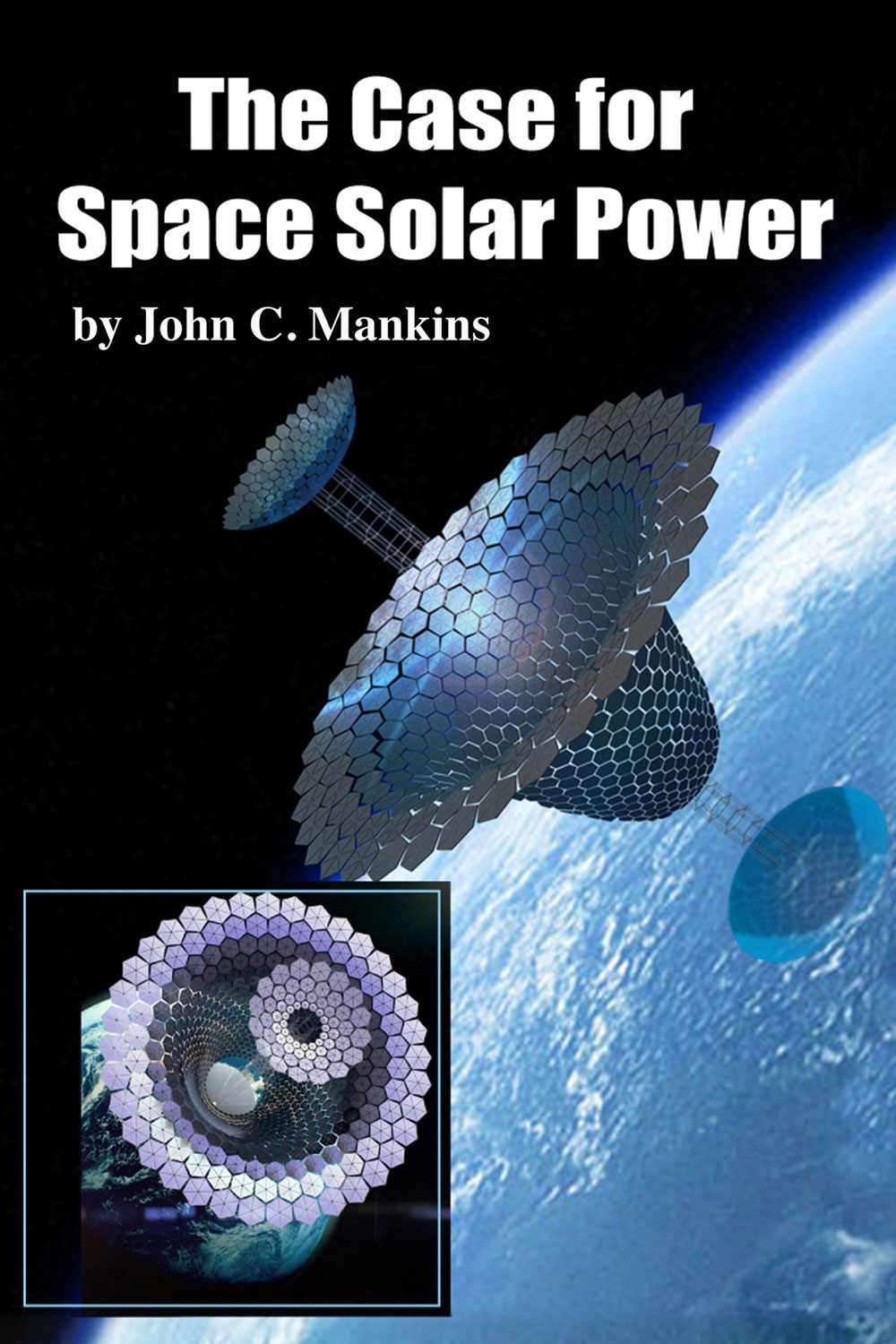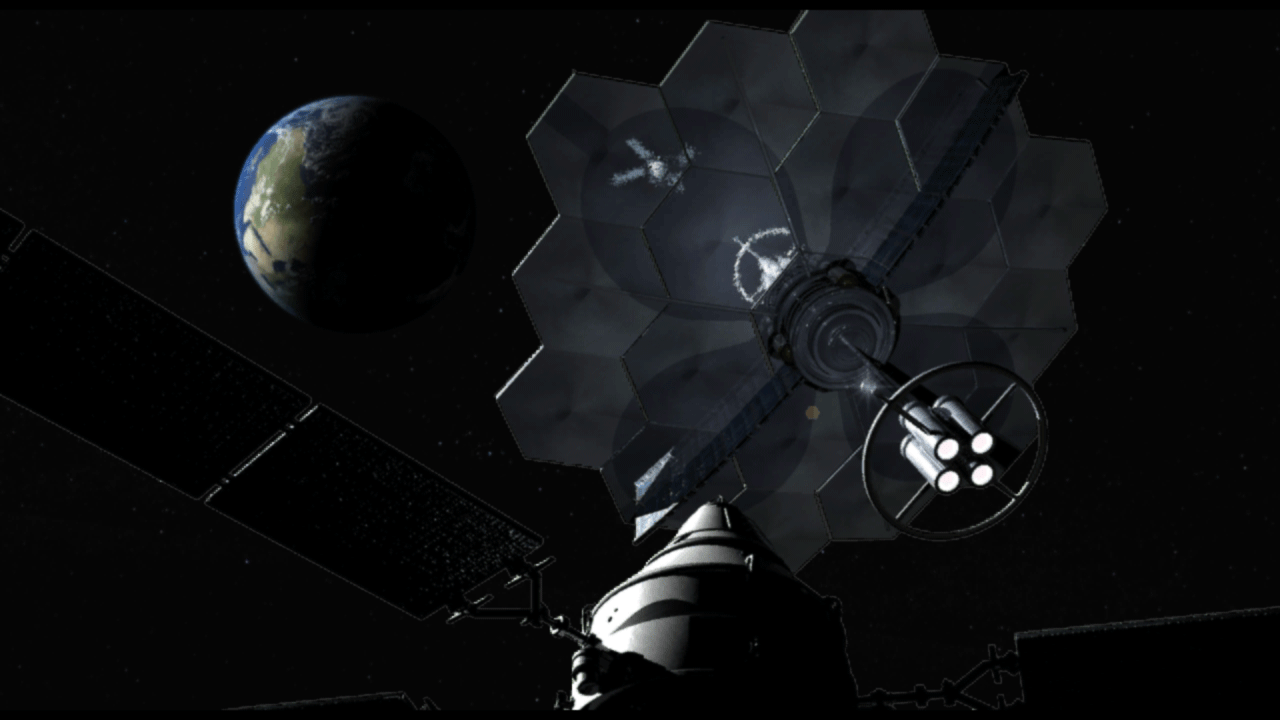Solar energy directly beamed to Earth’s surface from space has for over fifty years been proposed as a cheap and endless source of energy. In more recent years, this Space Based Solar Energy (SBSP) has also been suggested as a way to tackle climate change by weaning us away from fossil fuels. Yet for all its perceived usefulness, the practical implementation of such plans is as far away now as it has ever been.
 Originally proposed by Dr. Peter Glaser in 1965, the concept involves satellites in orbit converting solar energy from our Sun and converting this into a form that is then transmitted down to a receiving station on the Earth’s surface below, either by microwave or laser transmission. The advantage over solar panels on Earth is that solar energy in space is effectively continuous; the weather or the day/night cycle cannot interfere. Without the barrier of the atmosphere, solar energy is more powerful as well. SBSP seeks to directly tap the endless and enormous energy of our Sun and put it to use here on Earth.
Originally proposed by Dr. Peter Glaser in 1965, the concept involves satellites in orbit converting solar energy from our Sun and converting this into a form that is then transmitted down to a receiving station on the Earth’s surface below, either by microwave or laser transmission. The advantage over solar panels on Earth is that solar energy in space is effectively continuous; the weather or the day/night cycle cannot interfere. Without the barrier of the atmosphere, solar energy is more powerful as well. SBSP seeks to directly tap the endless and enormous energy of our Sun and put it to use here on Earth.
This startling idea could provide a way to break our civilisation’s dependence on fossil fuels and to reorder the geo-political relationships derived from our petroleum based economy. SBSP received more attention during the 1970s and in particular became associated with the studies on large-scale space habitats undertaken by Dr Gerard O’Neill. Analysis at the time indicated that to really make an impact, the structures in space required by SBSP would have to be enormous. Satellites with arrays of solar panels over a kilometre in diameter were outlined in the more far-sighted reports. These issues were seized upon by critics and the concept became somewhat discredited.
 In the decades that have followed, new studies have returned to the idea. The tantalising prospect of cheap, abundant energy means interest has never entirely disappeared. One common theme is that no fundamental breakthrough in science is required to deliver SBSP; the challenges are those of scale and cost. As well as the huge infrastructure required, another issue is the very large number of launches from Earth that would be required and their resultant costs. One suggestion on how to tackle this is to use materials taken from the Moon’s surface as the building blocks for the power satellites, thus cutting down on the number of launches from Earth’s high gravity well.
In the decades that have followed, new studies have returned to the idea. The tantalising prospect of cheap, abundant energy means interest has never entirely disappeared. One common theme is that no fundamental breakthrough in science is required to deliver SBSP; the challenges are those of scale and cost. As well as the huge infrastructure required, another issue is the very large number of launches from Earth that would be required and their resultant costs. One suggestion on how to tackle this is to use materials taken from the Moon’s surface as the building blocks for the power satellites, thus cutting down on the number of launches from Earth’s high gravity well.
 More recent consideration focuses on the use of new techniques and technologies to reduce the costs required in creating a viable SBSP system. The original studies envisaged armies of workers in space being required to assemble the power satellites; modern studies note how robotics can be used instead, especially when combined with 3D printing techniques. John C. Mankins’ book, The Case for Space Solar Power is an accessible and fascinating look at the development and current state of studies on SBSP.
More recent consideration focuses on the use of new techniques and technologies to reduce the costs required in creating a viable SBSP system. The original studies envisaged armies of workers in space being required to assemble the power satellites; modern studies note how robotics can be used instead, especially when combined with 3D printing techniques. John C. Mankins’ book, The Case for Space Solar Power is an accessible and fascinating look at the development and current state of studies on SBSP.
Practical experiments related to SBSP have taken place, for example in Japan. This involves the beamed transmission of energy over a distance of over fifty metres. If SBSP is to move forward, experiments in space are needed to prove the technology involved. An example of this could be a power satellite, somewhat smaller than the eventual structure at only 50 metres in diameter, being placed in geosynchronous orbit and beaming down power to a collecting station on the surface below.
The promise of SBSP is potentially a world wide revolution in energy creation. SBSP could offer clean, continual power at very little cost, once the enormous installation required is in place. Freed from needing fossil fuels, our civilisation can potentially step away from additional carbon loading of the atmosphere.
Yet there are many counterpoints to be made. Elon Musk, of Tesla and SpaceX fame, takes the view that SBSP is impractical as, in his view, by the time SBSP derived energy has been partially absorbed by the atmosphere and is received, the level is not that much different from conventional solar panels placed on Earth’s surface. The suggestion is that it would be cheaper and more efficient to obtain all the energy SBSP might provide by an appropriate number of conventional solar panels on Earth’s surface instead.
 As well as the power satellites, which would still be very large even with the application of modern techniques, the receiving stations on Earth would be huge as well. To collect the radiation at ground level will require stations that are estimated to be, again, over one kilometre in diameter. The safety of the microwave or laser transmissions to Earth from the power satellite is also another key issue. Advocates suggest these would be at such a low level that it would be safe for birds or aircraft to fly through; opponents are not so sure.
As well as the power satellites, which would still be very large even with the application of modern techniques, the receiving stations on Earth would be huge as well. To collect the radiation at ground level will require stations that are estimated to be, again, over one kilometre in diameter. The safety of the microwave or laser transmissions to Earth from the power satellite is also another key issue. Advocates suggest these would be at such a low level that it would be safe for birds or aircraft to fly through; opponents are not so sure.
The issue of cost is the most important factor in deciding if SBSP is viable and, as with safety, opinions are divided. It seems that launch costs are a key here. These never did reduce as dramatically as the studies from the 1970s predicted. The analysis must focus on whether SBSP derived electricity is cost effective compared to that from other sources, such as nuclear power stations.
The potential for answering both our ever-growing energy needs and the escalation of climate change will renew interest in SBSP. Such a huge project requires government intervention, yet it remains to be seen if democratic governments elected every semi-decade or so can implement such a substantial plan and see it all the way to fruition. It is interesting to note that the Chinese government is studying SBSP as a possible means of tackling its pressing energy needs. Perhaps what is needed is a race, like the Moon race of the Apollo years, to finally see SBSP leap off the drawing board and into orbit.

Ugh, this again?
https://matter2energy.wordpress.com/2012/03/17/the-maury-equation-redux
A solar panel in space delivers LESS energy to the grid over is lifetime than leaving the panel on earth. That it also costs a thousand times more isn’t even an issue you need to consider at that point.
If this was cost effective, then private enterprise would do it to earn profits. If it is not cost effective, then why take money from working folks to have the government (with all its waste and inefficiency) do it?
In 1980, when it became obvious NASA’s launch cost estimates for the space shuttle were grossly optimistic, O’Neill et al. published another route to manufacturing using lunar materials with much lower startup costs.